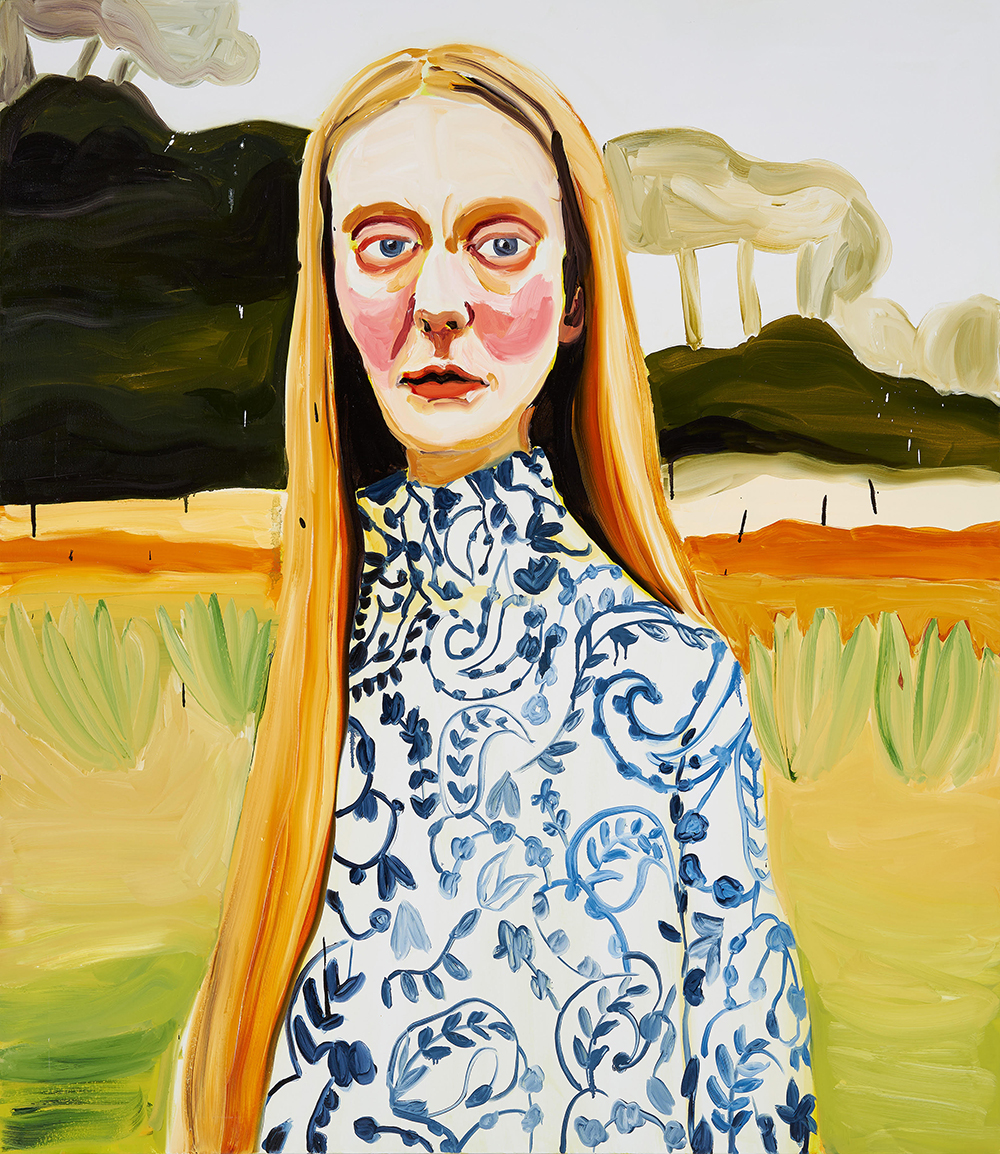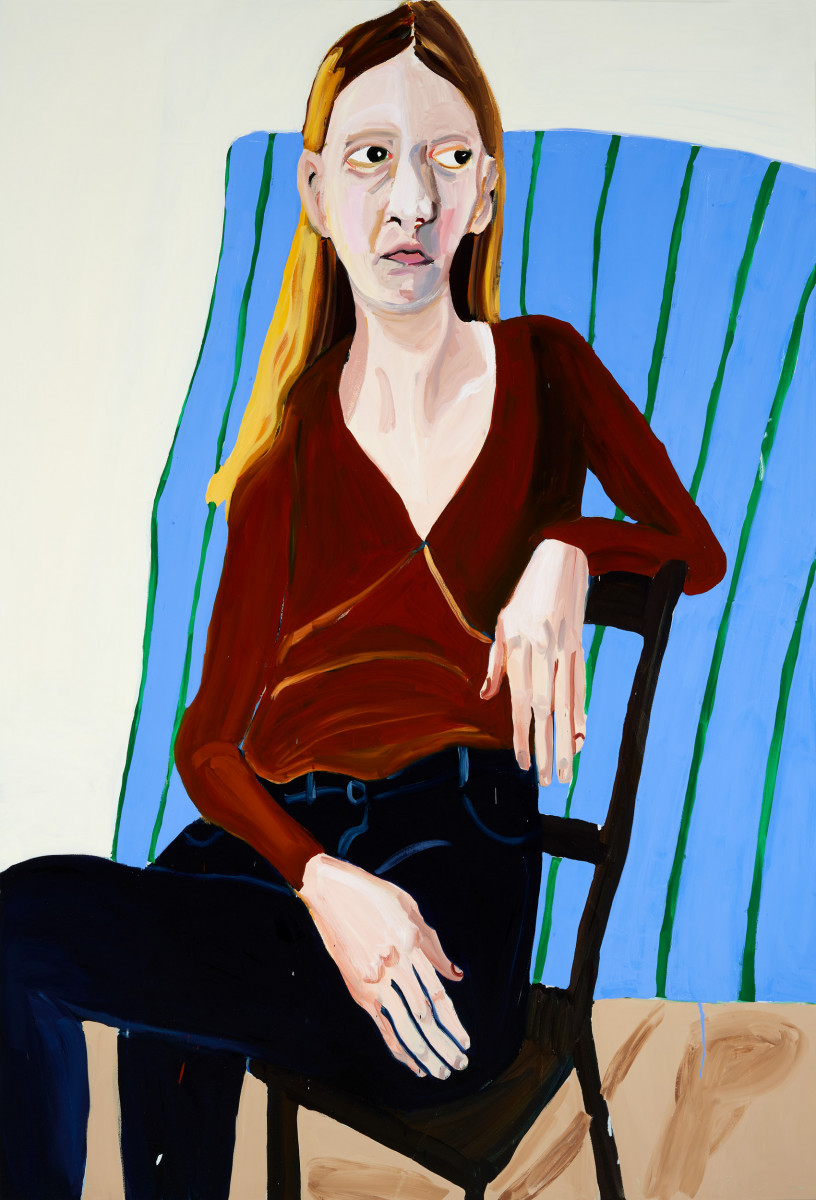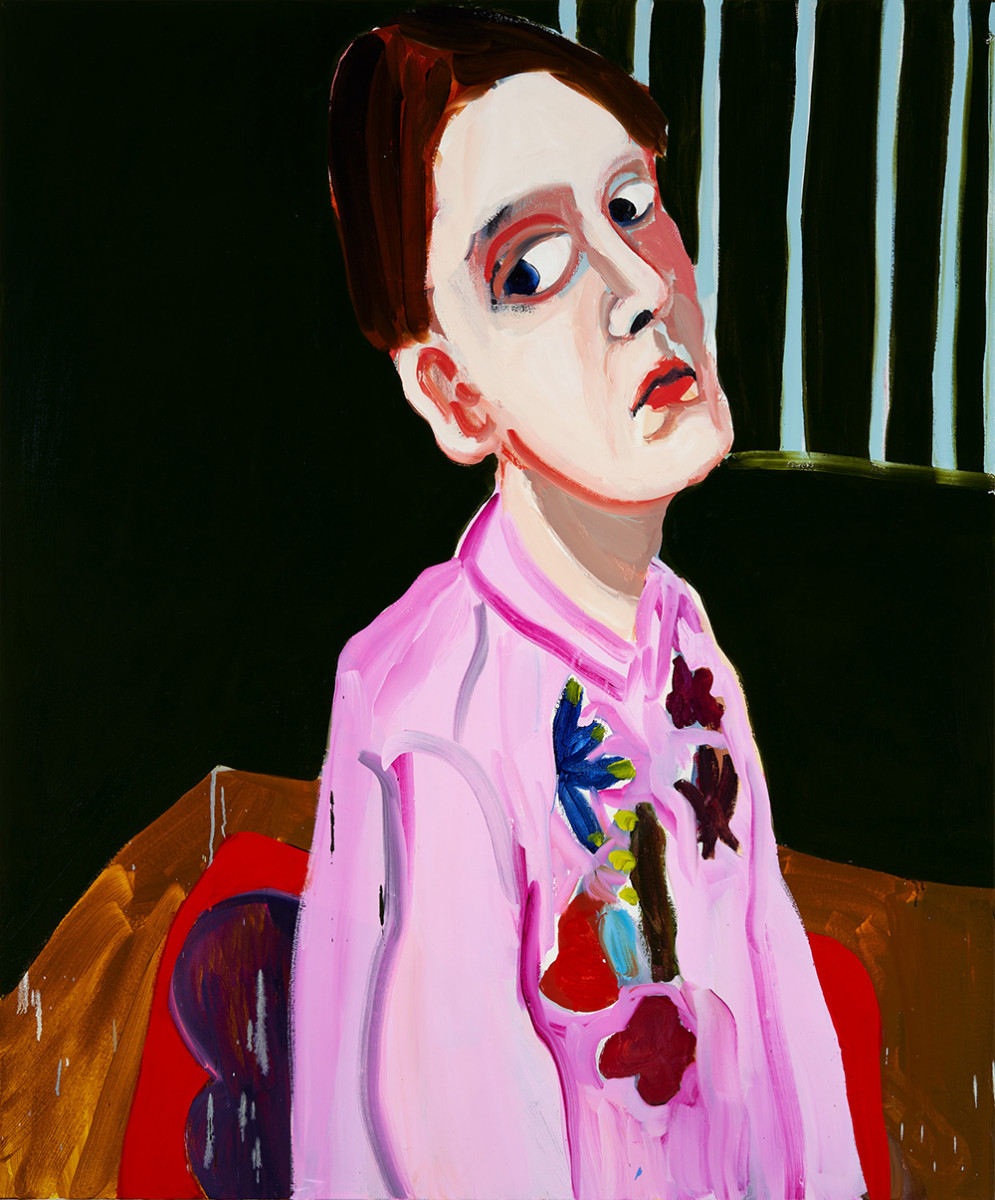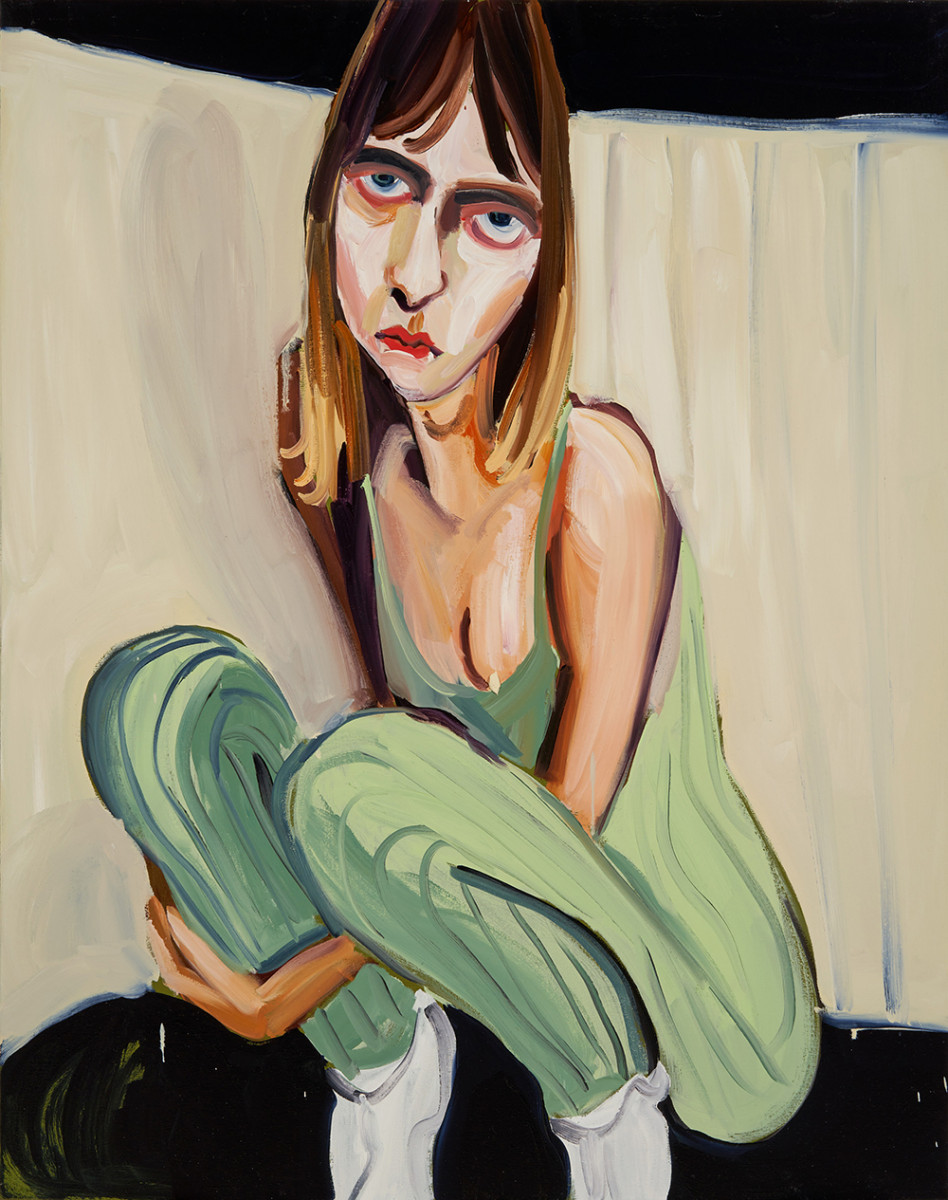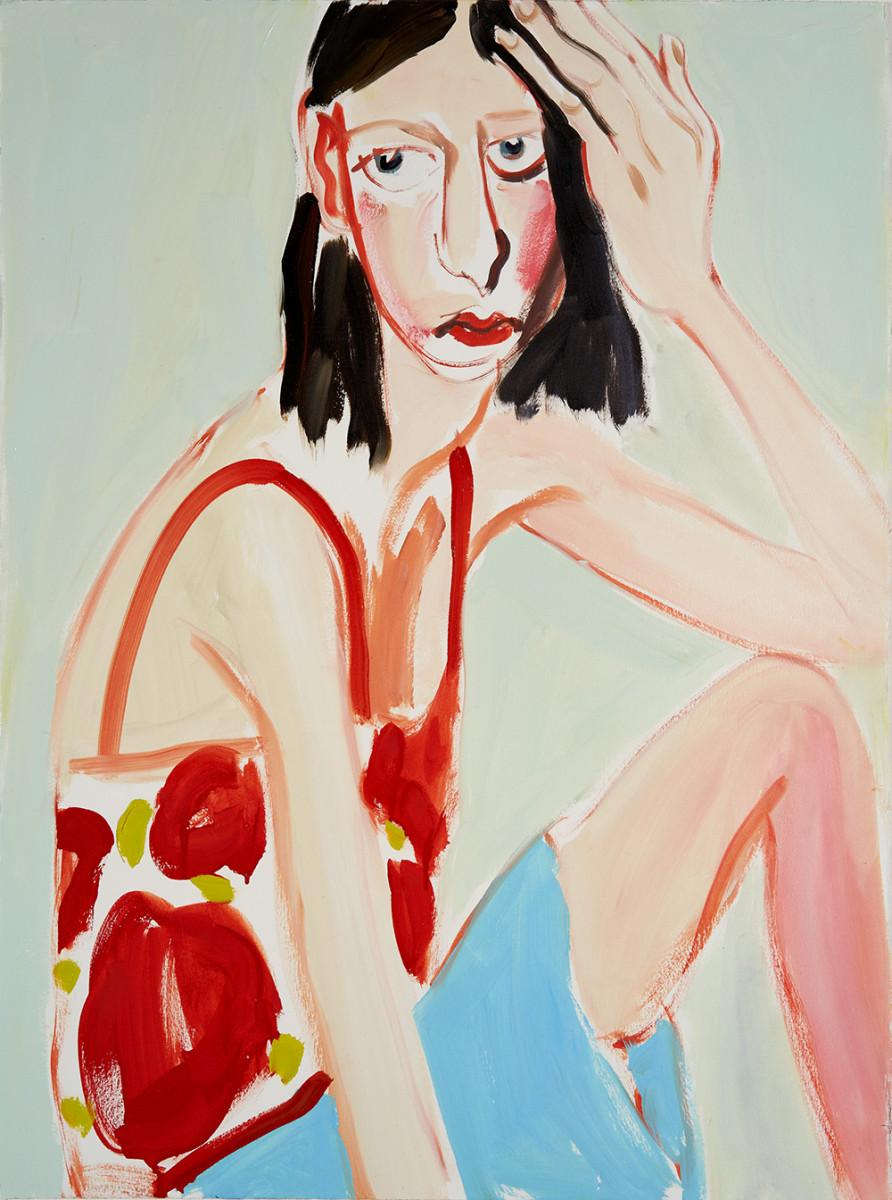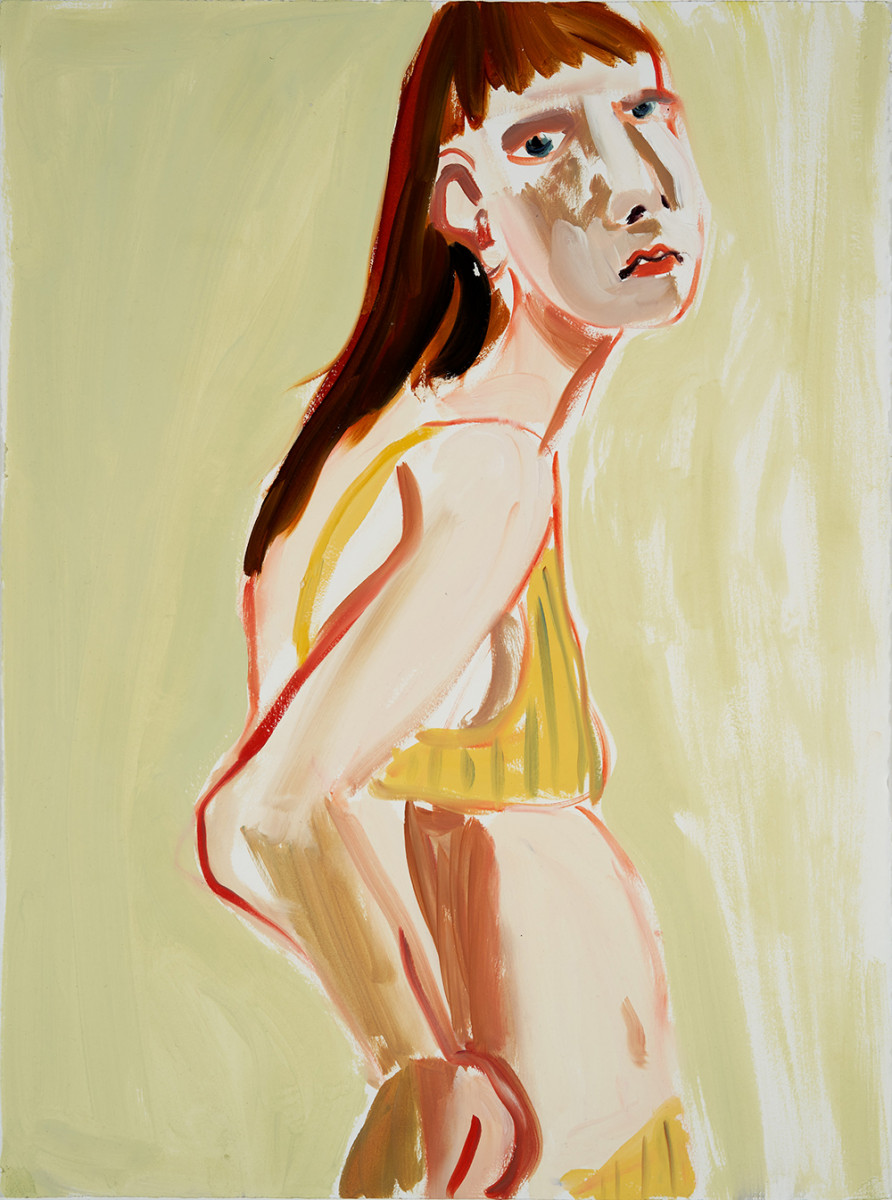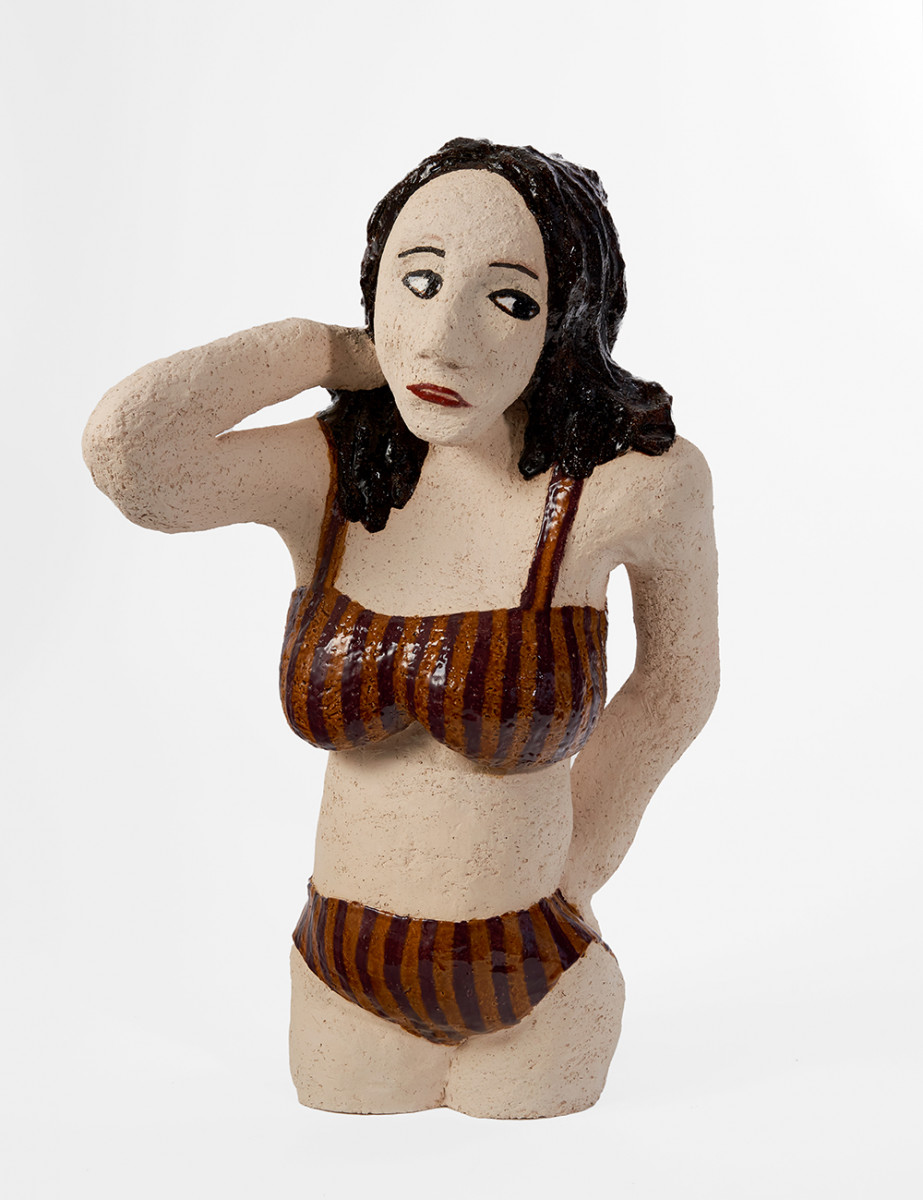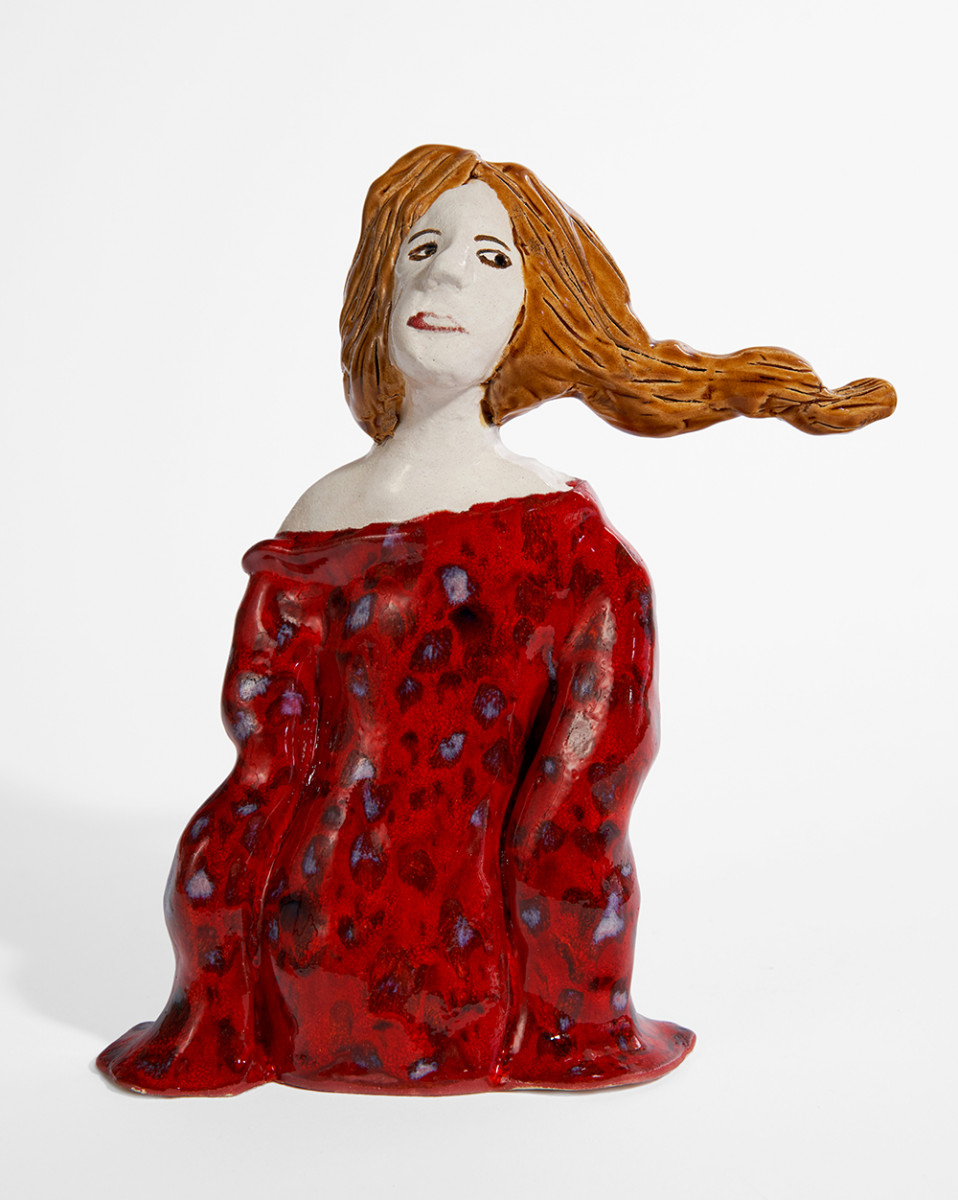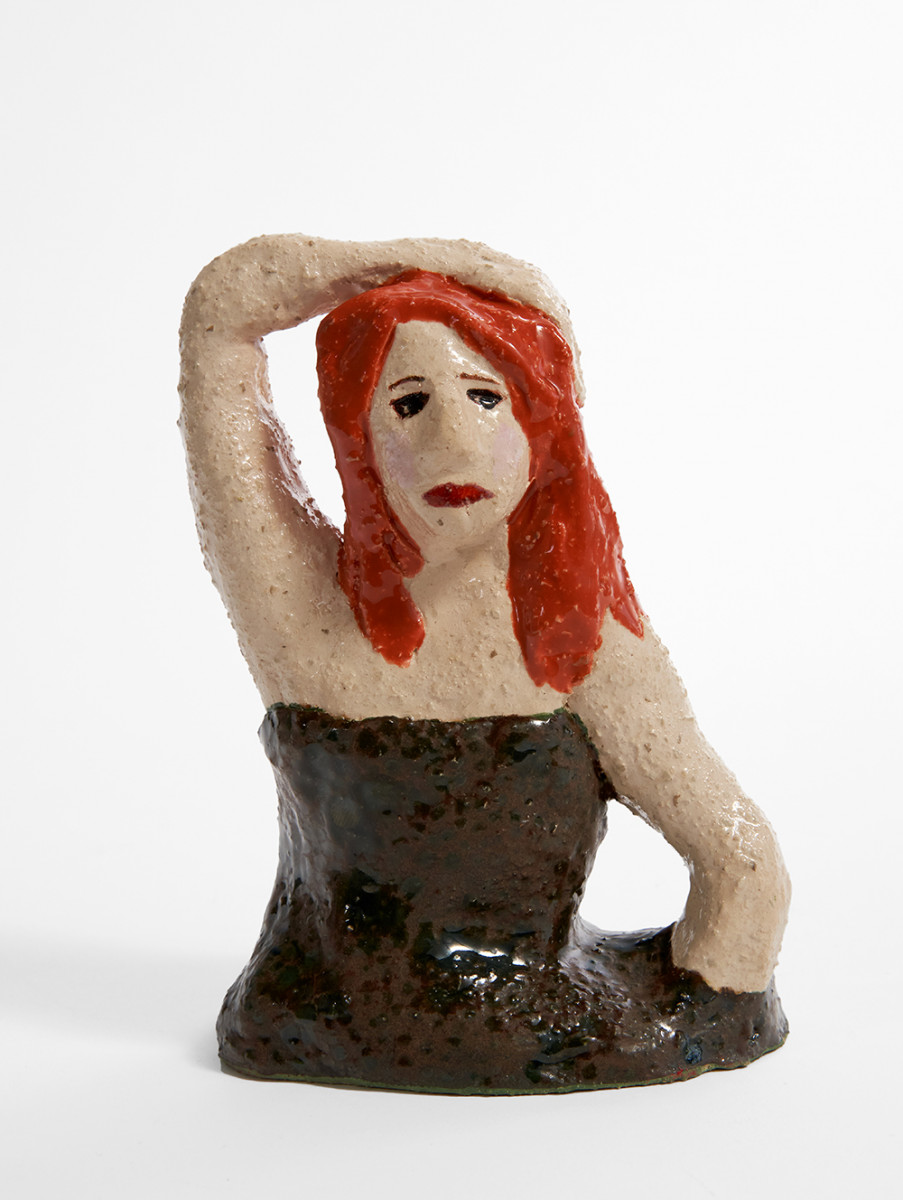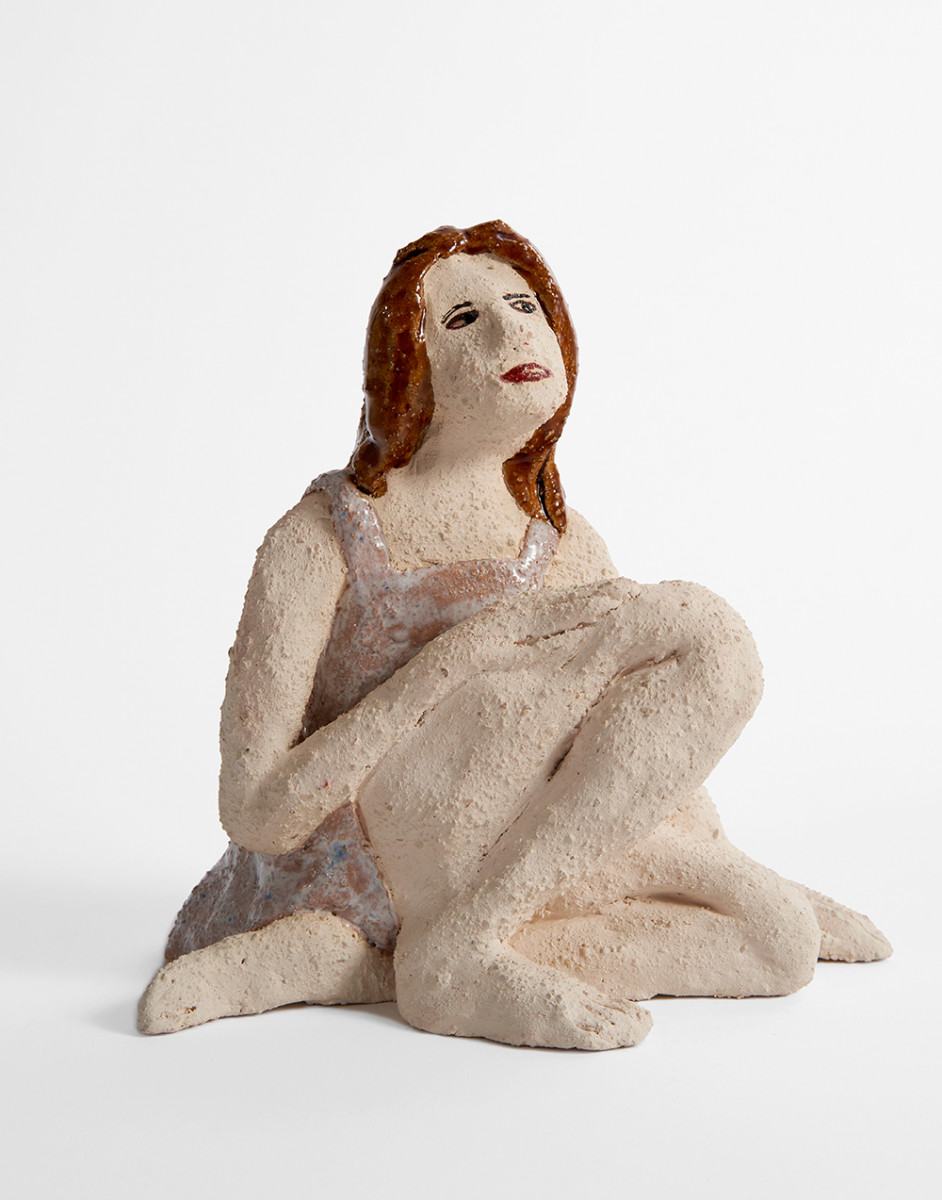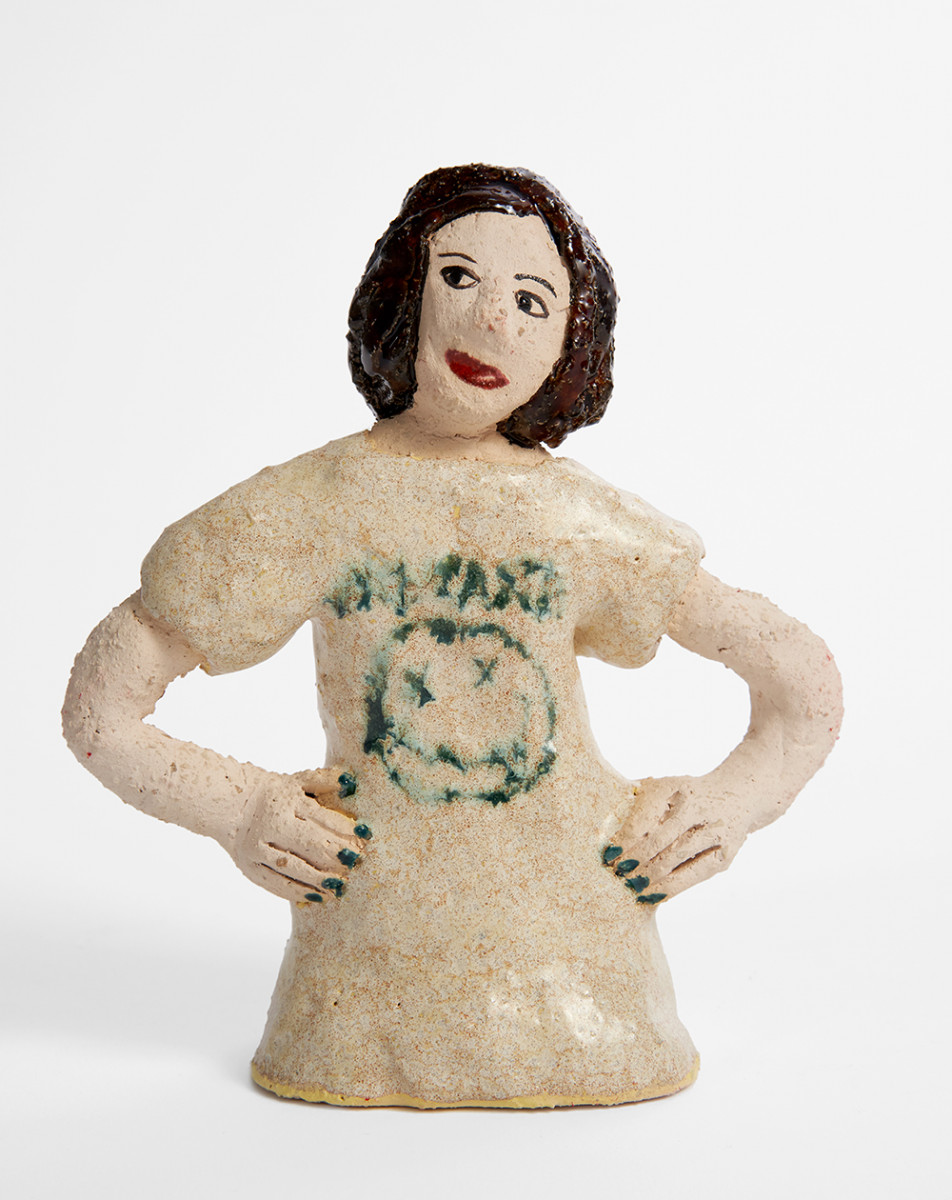Jenni Hiltunen: Alone
Steve Turner is pleased to present Alone, a solo online exhibition by Helsinki-based Jenni Hiltunen that consists of recent paintings and ceramic sculptures which depict a solitary woman who enigmatically gazes out at the viewer. Hiltunen uses color and form to explore psychological nuances that are deeper than the subject's superficial attributes. While she acknowledges that she is the subject in most works, she hopes that viewers will also see themselves.
Jenni Hiltunen (born 1981, Hollola, Finland) earned an MA at the Academy of Fine Arts, Helsinki (2007) after earning a BA at the Turku Arts Academy (2004). She has had solo exhibitions since 2005, most recently at Galerie Forsblom, Helsinki; Mimmo Scognamiglio Artecontemporanea, Milan and Kunsthalle Växjo, Sweden. Her work has also been included in museum group exhibitions at Kunsthalle, Helsinki and Kiasma Museum of Contemporary Art, Helsinki. Alone is Hiltunen's first exhibition with Steve Turner and her first in the United States.

Jenni Hiltunen in conversation with Steve Turner
Steve Turner
Before we talk about your recent doings, I would like to know more about your earlier life. Where did you grow up? What was your life like before you moved out of the family home?
Jenni Hiltunen
My childhood family included my mother, father and two younger sisters. I was born in Hollola, near Lahti, but my father wanted to move back to his childhood village so we moved to Mikkeli, a small town about 250 kilometers northeast of Helsinki. My family built a house on the edge of a field, on the land of my grandparents when I was two year old. My grandparents were farmers and we had cows. My childhood was very free. We played in the woods the whole day and the adults didn't watch us. We lived far from the nearest city and from neighbors, so we didn't meet other kids very much before we started going to school. My grandmother cared for us when my parents were at work. We drew and painted a lot. We collected clay from the ditch and made sculptures. My family is creative, but no one was an artist before I came along. They just painted, weaved and carved for their own pleasure. The atmosphere of my childhood was somehow mysterious. There was a lot going on beneath the surface. I started at a children's art school when I was ten year old. My secondary school was also art-oriented. I moved away from home at the age of sixteen and started art high school in Savonlinna.

ST
I love seeing names of small towns in Finland. I imagine that most readers living outside of Finland will not be familiar with these locations, so we will certainly include a map of Finland for context. Looking back on those experiences, do you recognize some early influences that shaped the course of your life and caused you to become an artist?
JH
I started to draw at the age of one when my little sister was born. My mother was busy with a baby so she was happy when I was silent and still with a pen in my hand. I was able to draw an entire human figure with hands, feet, eyes and mouth when I was one and a half years old. So I grew up with drawing. My family wasn't so interested in art, but culture was still valued. I have always felt that making art was the only thing that really interested me.
ST
Can you describe your experience at art high school?
JH
I really enjoyed studying in Savonlinna. The school is the oldest art high school in the Nordic countries and there you can study art and music. I met my best friend there and she is also an artist. We were roommates and lived on an island in the heart of the city. We studied art history, painting, drawing, ceramics and printmaking. I liked painting the most. I think it was a very important period in my life. Being an artist began to feel possible and I didn´t consider any other options.
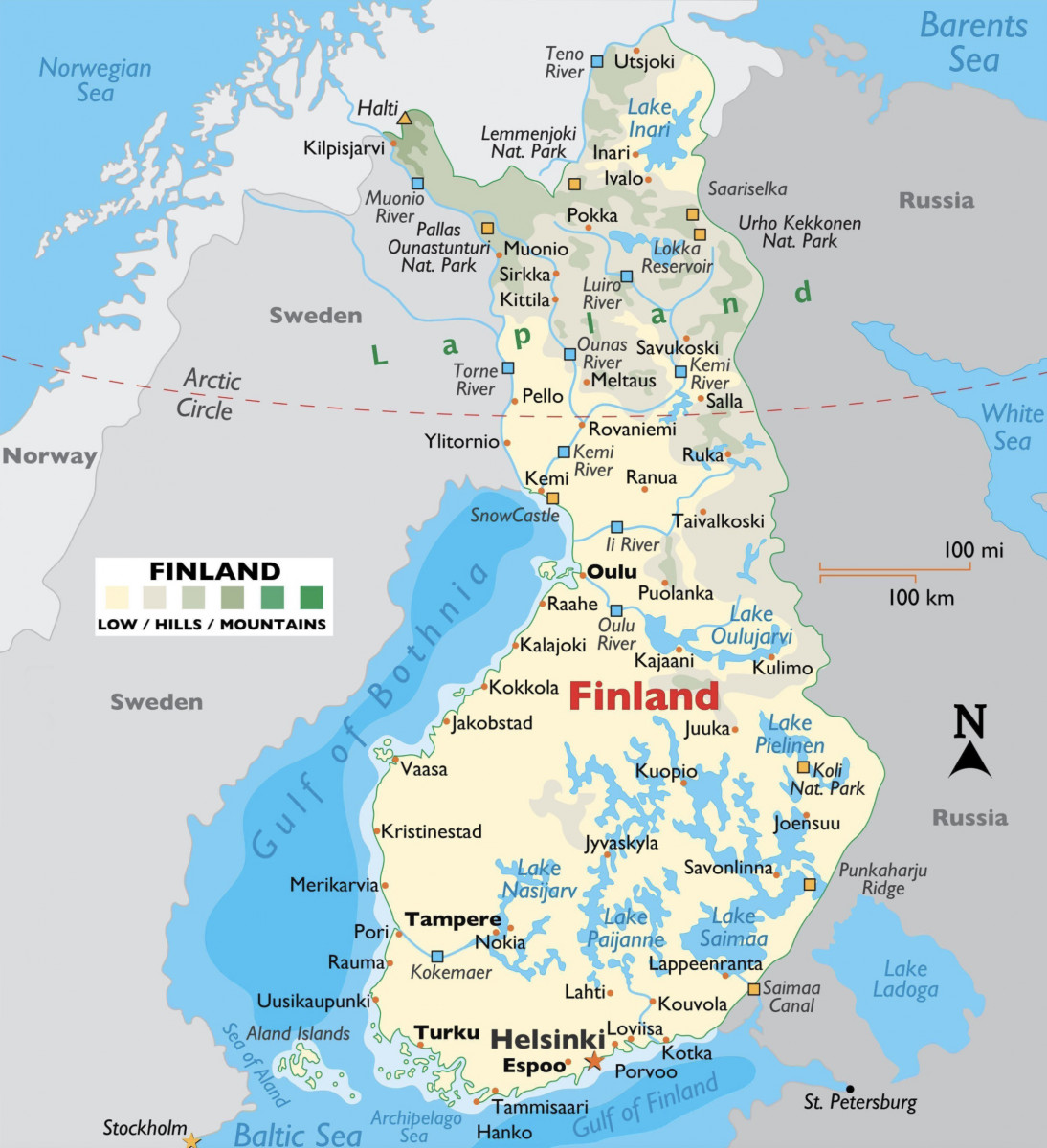

ST
Did you then enroll at Turku Arts Academy immediately after high school? Can you describe your experience there?
JH
Yes, I went straight to Turku after Savonlinna. I applied also to the Academy of Fine Arts in Helsinki, but I didn't get in. I was eighteen years old so it was a good option to go first to Turku. I liked the school because the teachers encouraged me to explore different styles and techniques. I didn't know what kind of artist I wanted to be so this was very valuable. After one year of study we had to choose painting, printmaking or sculpting and I chose printmaking. I think this choice influenced the way I use large bright color surfaces in my paintings. I started painting again when I graduated from Turku and went to the Academy in Helsinki to do my master degree. The school was great in Turku, but my personal life was a mess. I was depressed and anguished and everything was hard. I was lonely, because my family and old friends lived so far away and Turku wasn't the easiest city in which to live. I started therapy and luckily it helped. Then I met my future husband and we have been together since then. When I moved to Helsinki, he started to study photography in Turku, so we lived in different cities for four years.


ST
Was there any sort of adjustment when you moved to Helsinki, the biggest city in Finland? Did you appreciate at the time how much of Finland you had already experienced in your young life? I wonder if you had traveled abroad by this point in your life so that you might have been developing a good comparative sense of Finns versus people from elsewhere?
JH
I always knew I would eventually live in Helsinki so I didn't rush it. Both of my aunts had lived in Helsinki for a long time and I had visited them often since I was very young. When I came to Helsinki as a child, the city felt so big and magical. It was so exotic just walk around and watch people and big houses. I thought that Helsinki was so beautiful and full of opportunities. When I finally moved to Helsinki it felt like I had come home. I think it has been very rewarding to see many cities and people around Finland. I did not travel abroad so much as a kid, but we traveled in a caravan for many summers, mostly in the north, in Lapland, Sweden and Norway. I was once in Spain at the age of twelve. I traveled on Interrail with my friends after high school and that was an eye-opening experience. It was so much fun to meet young people around the world and see the old cities of Europe. We mostly visited eastern Europe – Budapest, Krakow, Prague etc, but we also went to Venice. My budget was then 1000 Euros for the whole month, which feels ridiculously low today. That journey inspired my desire to see more and I have traveled fairly extensively as an adult. I have been to New York twice, everywhere in Europe and once to China. I have also done artist residencies in Paris, Berlin and Marbella.
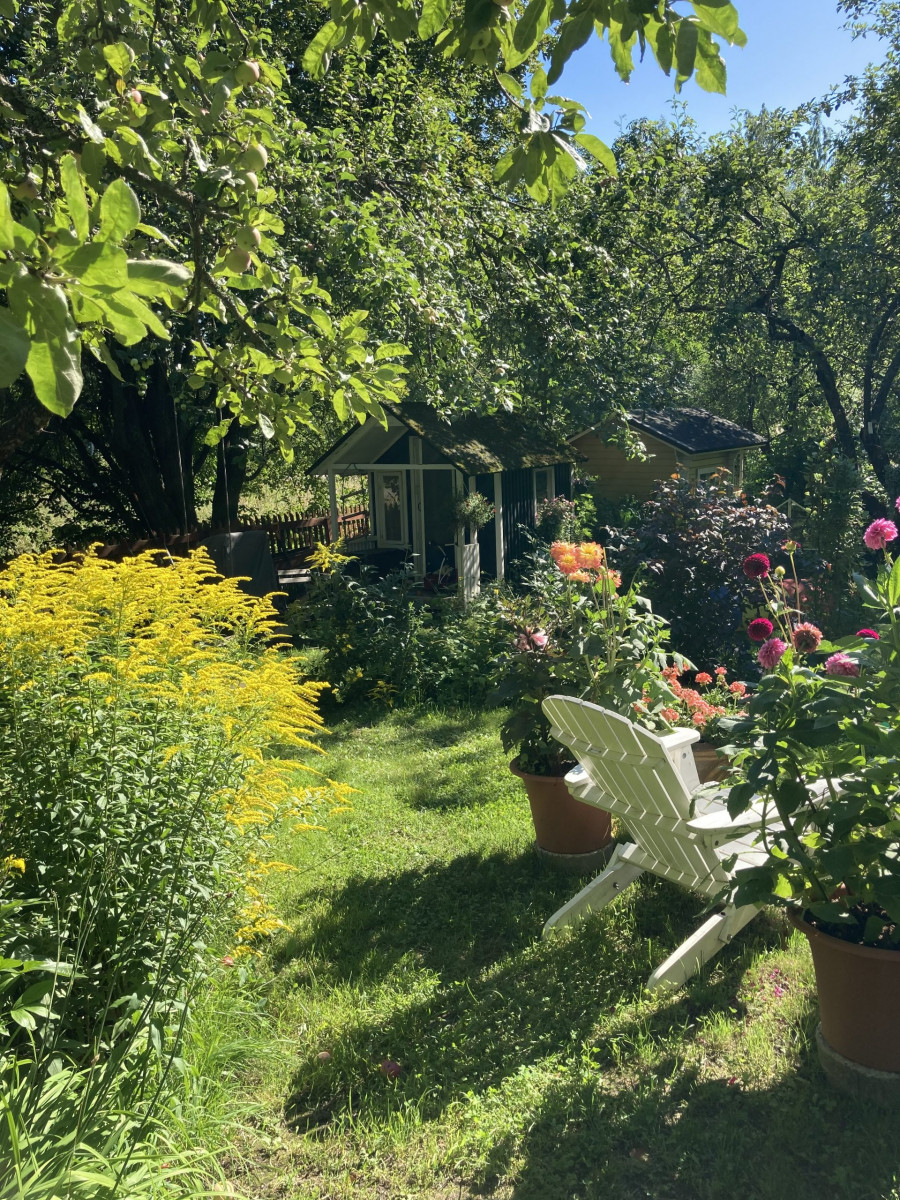
ST
Your continuous art education, from the children’s art school when you were ten through the Art Academy when you were in your twenties, stands out as extraordinary. I can’t recall another artist who had so many art schools in their past. Besides art and art history, did you have a chance to study other subjects, perhaps history, science, literature, theater or the like? I am curious to know what interests you besides art.
JH
I have not studied anything besides art. I wish I had a parallel life and a lot of time to study more! I am interested in many things and I read a lot. I have a small garden and love planting and gardening. I grow vegetables, herbs and different flowers. I have so many plans on how I would like to build my garden. I love literature, poetry, theater, fashion, architecture, design, wine and good food. I am passionate about picking mushrooms. The whole summer I look at the sky with my mother and we observe the weather conditions and try to guess what kind of mushroom season is coming. Unfortunately, my children hate forests and mushrooms and they complain so much if I try to take them to the woods.
ST
I would be a terrible interviewer if I did not follow up on the reference to your children. How many children do you have? How old are they? Feel free to elaborate as you wish.
JH
I have two daughters. The older one is seven and she started her first grade in a school last autumn. My younger one is almost four. They keep me very busy and sometimes it is difficult to combine family life and my art practice. Luckily I have a husband who takes care of the housework when I am busy or concentrating on work. But it is so wonderful to see them grow and learn new things. They are also very interested in drawing, painting and reading, so we have a lot in common.
ST
You previously mentioned that you experienced loneliness and depression when separated from family and friends. Was that temporary or is it still an aspect of your life? I ask because I sense a melancholy in many of your works.

JH
Somehow I have always felt myself an outsider and I am not quite sure why I feel so. As a child I thought that I must grow and find my place in the world, but now I think that maybe the feeling is just in me, more like an aspect of my personality. Maybe I work so hard at art because I think it might be the key to finding myself. In every piece I try to solve this mystery, and yet it remains. The painting has its own language. It is subconscious. I have seen a therapist as an adult, but more for acute crises, not as a regular thing. I think my mental health is very good and I have a lot of tools to use whenever problems appear.
ST
Let’s turn to your work of recent years. Unless I have missed something, you paint a single female figure, seated, standing or reclining. The scene could be indoors or outside, but the subject seems always to be aware of the viewer with a detached and stoic gaze. Is this a representation of you?
JH
Yes, I think so. It could be me. Every painting reveals something of me to the viewer so you could interpret them as mental self-portraits. But I think the essential thing is that my paintings are not portraits in the traditional way. The figures are imaginary and I try to reveal deeper human attributes as opposed to representing someone’s surface features. I also think it is important to keep a painting open to different kinds of readings, a platform where one can reflect on their experiences and feelings. I am also very interested in creating paintings as images, and carefully consider what makes a painting interesting, what it requires and what is essential. I have a lot of art books and other visual sources in my studio. I like to explore different color combinations, compositions and paint textures. I think it is good to define some boundaries for one’s work to better focus on what really matters and that is painting itself. The female figure is my boundary for now.
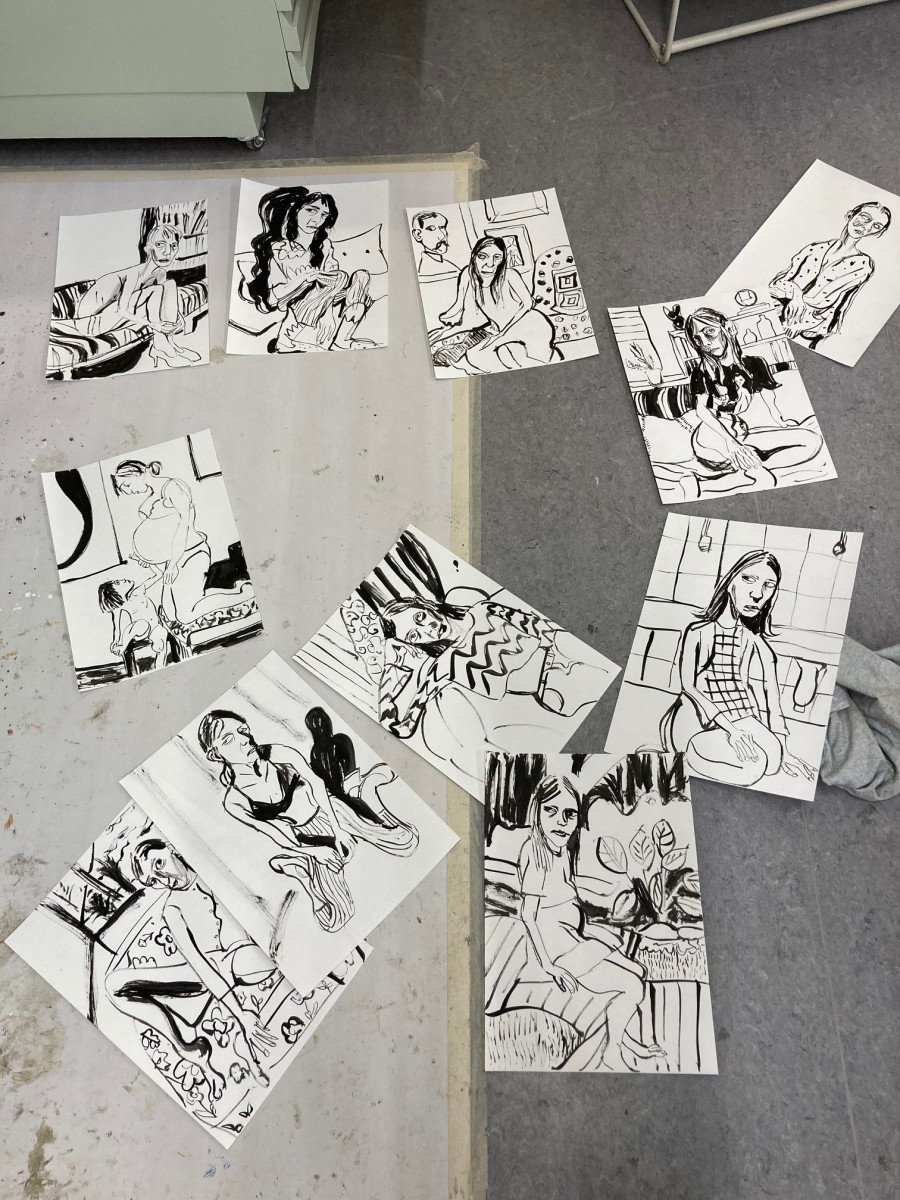
ST
You said in an earlier interview that your portraits are in part an investigation of the “posing culture” of social media. Is that still an interest?
JH
I have moved in another direction and that theme is not relevant anymore. But I think that feminist issues and the question of the gaze are still there.
ST
I also can’t help but think of your paintings as Nordic with their focus on a stoic solitary figure. I find them to be loaded with psychological intensity and they make me think of certain paintings by Helene Schjerfbeck (1862-1946), a Finnish painter who is best known for her moody self-portraits from the early years of the 20th century. I wonder if Schjerfbeck’s work resonates with you. I can certainly think of other artists with whom you share more attributes, but I think it is interesting to connect you to another Finnish artist, a woman, and one who worked more than one hundred years ago.
JH
Helene Schjerfbeck has been a very important artist to me. She was my favorite artist when I was younger and I still really like her paintings. I think I have adopted the eyes from her paintings, how her women look to the side and away. There is also the same kind of introversion feeling than in my own paintings. Her way of using colors speaks to me as well.

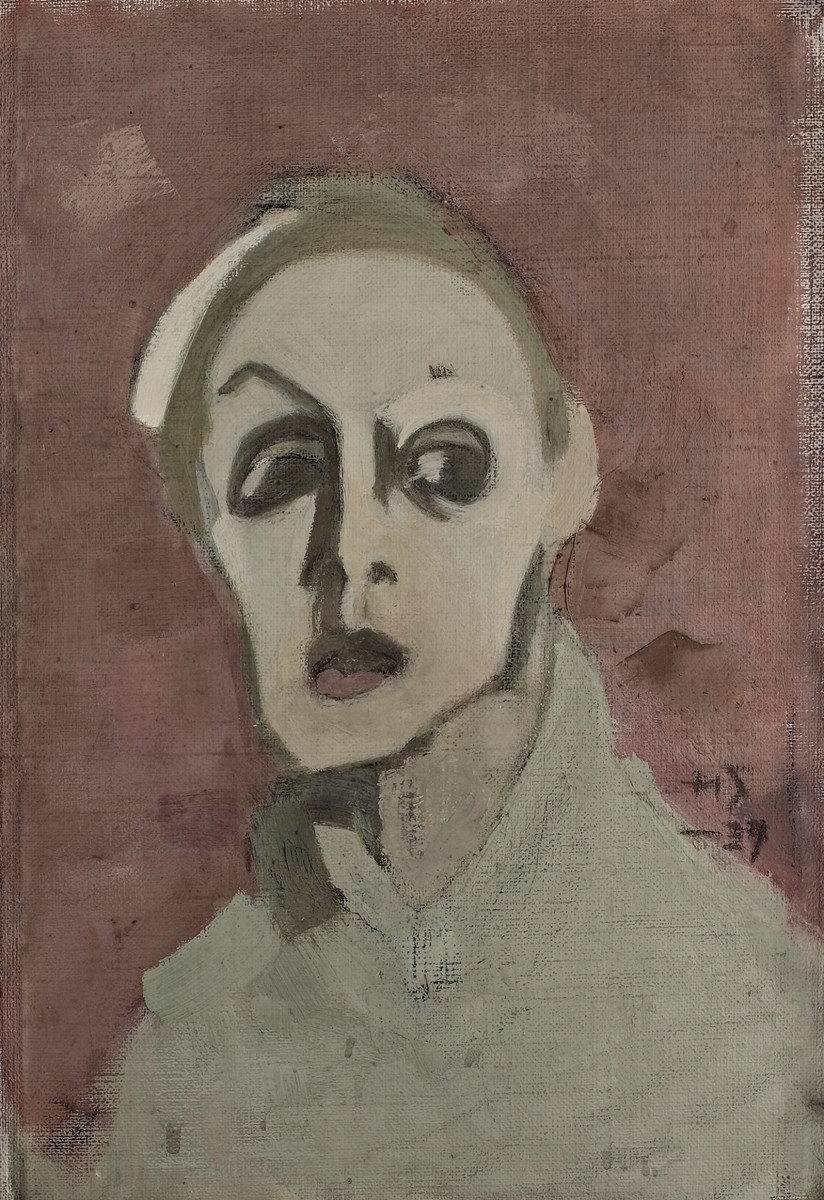
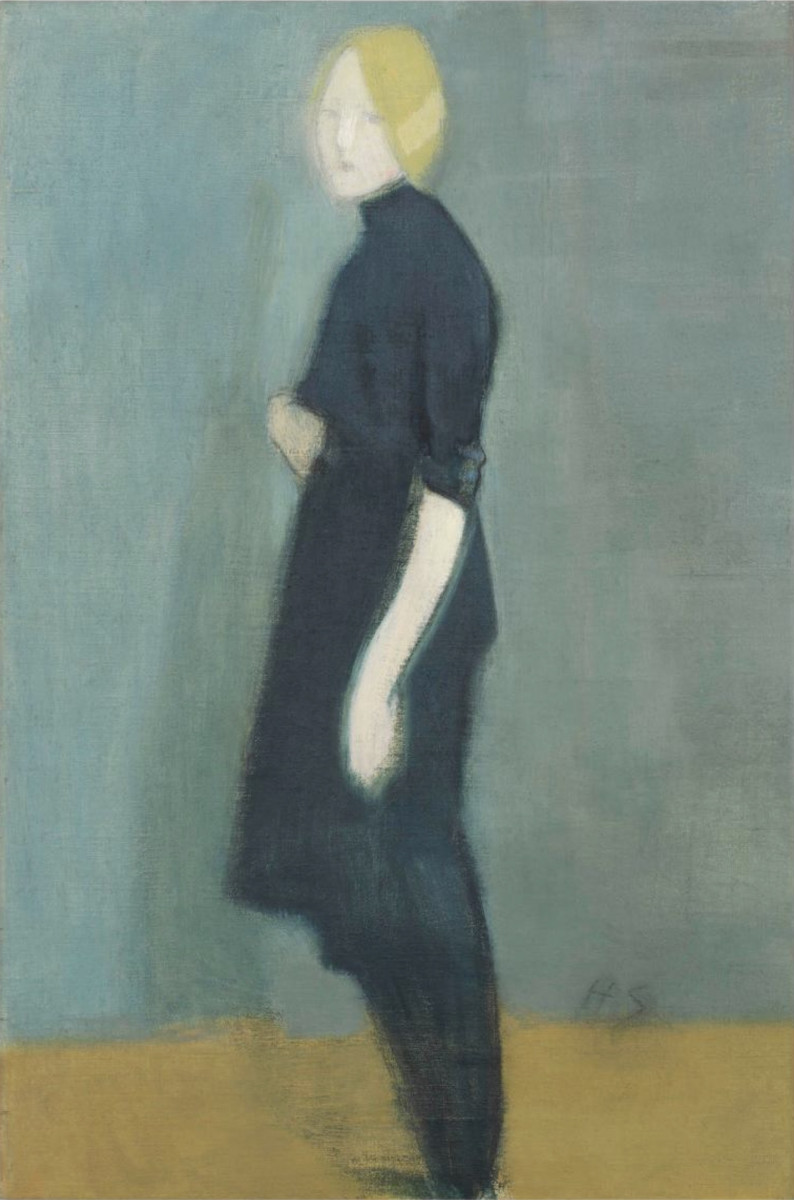
ST
Considering that you have lived your entire life in Finland, do you think that there is something particularly Finnish about your works?
JH
No ( I am laughing here). Or I don 't know. I may not be the best person to see this. I am not much of an extrovert. Perhaps that is a Finnish trait. I love to be alone in my studio or walk in the forest, but I really hate the darkness which lasts so long here. I dream of the light and the bright colors all the time. Perhaps I lived in the Mediterranean in my previous life. All Finnish masters like Helene Schjerfbeck traveled a lot in Southern Europe.
ST
I also note that you started creating ceramic works in 2020. What was the motivation for this body of work? Can we expect more ceramic work from you in the future? Since your ceramic works so far have been relatively small and some of your paintings are very large, I wonder if you have imagined making some very large ceramic figures.
JH
I made some ceramic works, mostly vessels, during high school. In 2009 I started studying ceramic techniques at the Adult Education Center of the City of Helsinki. I studied there once a week for five years and learned a lot. I thought it was only a hobby, but somehow the clay clumps began to appear in my studio. Now I have one studio for paintings and one for sculpting work and I will definitely continue working with both mediums. I am still learning how the clay works and how to get nice colors etc, but my plan is to increase the size of the sculptures as soon as my skills are sufficient.
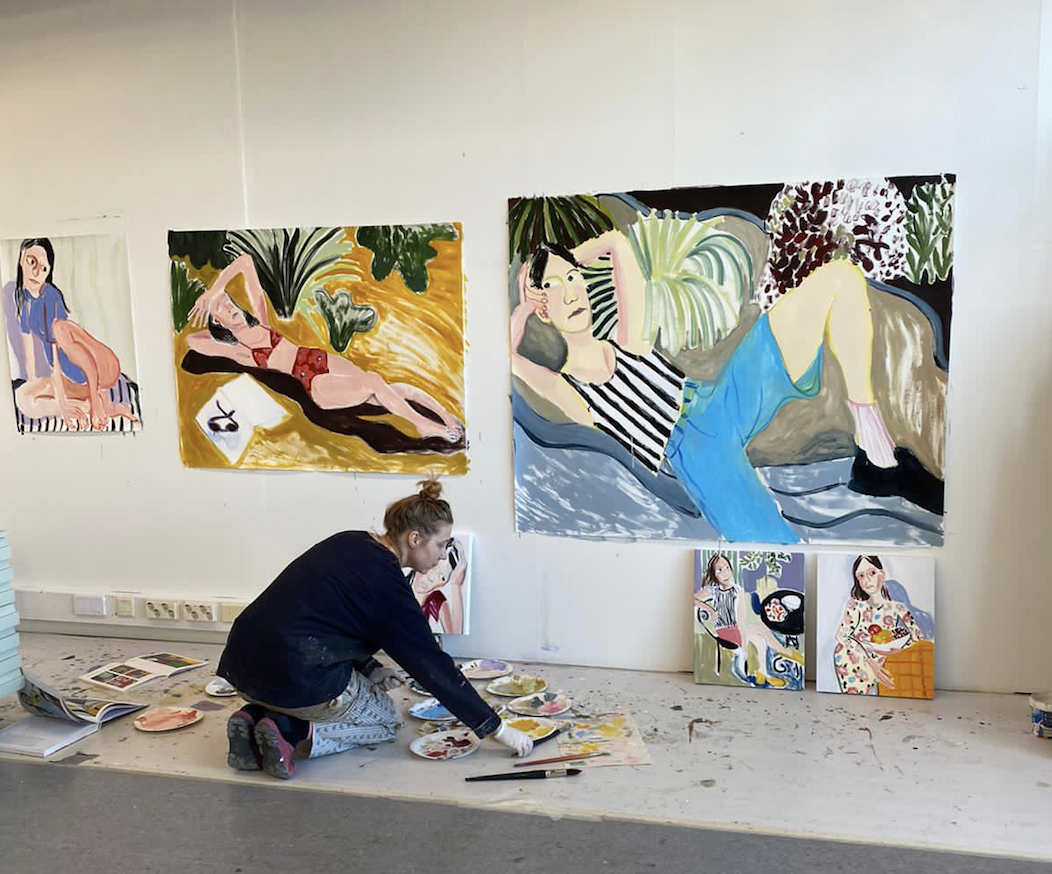
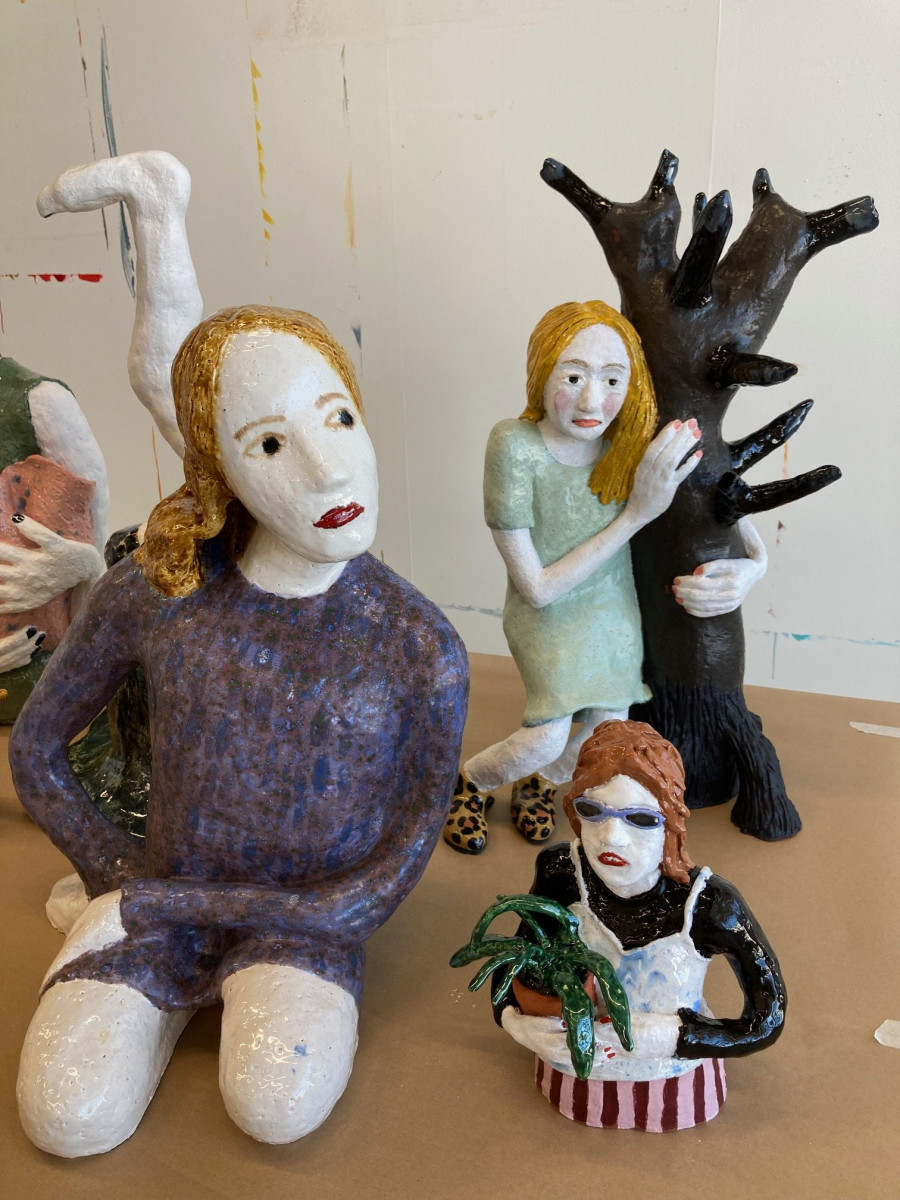
ST
I am very excited to introduce your work to our audience of collectors and curators in the United States and elsewhere, but I want you to have the last word. Have you ever been to Los Angeles? Besides seeing your works installed at the gallery, what would you like to do here?
JH
I have never been to LA, so I am super excited to come there and show my works. Naturally I want to see art, but I also have seen amazing photos of the hills and nature around the city and I would love to experience that too. And of course I want to go to the beach.
Jenni Hiltunen: Alone
January 27 – February 26, 2022
